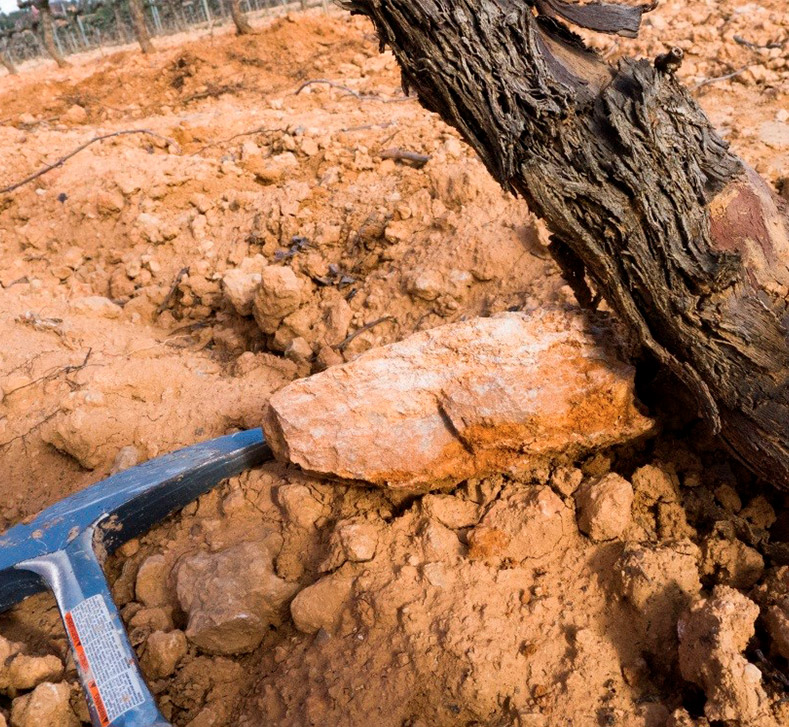The Can Marti estate
The Can Martí estate has belonged to the family since the XIV Century (1395) and is located on 135 hectares in the Penedés Region. We cultivate the white grape varieties Macabeo, Xarel.lo, Parellada, Malvasia, Chardonnay and Muscat, and the red varieties Garnacha, Cabernet Sauvignon, Merlot, Pinot Noir and Syrah.
ORGANIC WINEGROWING
The vineyards and olive trees are organically cultivated, which fact is certified by the CCPAE (Consell Català de la Producció Agrària Ecològica) the public organisation entrusted with monitoring compliance with European regulations.
Video in 3D format that goes into and shows the Can Martí estate
Organic Winegrowing rules prohibit the use of synthetic chemical and fertilising products and provide for their substitution by natural products. On the Can Martí Estate we use copper, sulphur, and techniques of sexual disruption, as well as manure from organic livestock farms. Furthermore, organic wine growing aims at increasing the biodiversity in and around the vineyards. In the vineyards themselves by means of the technique of vegetation coverage between the lines of vines, which improves the soil, provides nutrients, and increases the natural enemies that control pests. The bushy undergrowth of the surroundings of the plots also allows for the proliferation of insects, spiders, birds, and reptiles that are all pest controllers.


The soils and climate of the estate
The soil on the Can Martí Estate was formed by sediments deposited some thousands of years ago from the Garraf Hills. One of the most characteristic features of the soil on the Estate is the presence of accumulations of calcium carbonate. The movement of rain water through the soil dissolves the carbonates and deposits them deeper in the soil. This continuous process causes accumulations of these deposits. When these deposits become massified, after many thousands of years, they bind together and form a solid stratum called a petrocalcic horizon.
This hard stratum limits the availability of water to the vines and production but is a factor in giving quality to the grapes. The type of soil on the San Martí Estate is thousands of years old and possess special characteristics for the growth of quality grapes. Therefore, the soil is a natural patrimony and a production value to be preserved.
On the Can Martí estate the climate is temperate Mediterranean typical of the coastal and pre-coastal areas of Catalonia. During the 2006-2015 period the annual temperature averaged 15º C, the average rainfall was 515 mm and evapotranspiration 1033 mm. Good ripening is favoured during the summer months by very little precipitation.
On the Estate there are two medieval country houses, Can Martí de Dalt (Upper Can Marti) (Mas de la Torrevella) and Can Marti de Baix (Lower Can Martí), home of the cellars and where the production facilities are installed. According to the Doctoral Thesis “Cum Laude” by Dr Juan Curós (Architect), Can Martí de Baix was chosen from hundreds of other country estates and belongs to the type of “wine growing masia) where the whole group of buildings were built around an exterior patio with a large flat area, a the central space for all the buildings, and located in the middle of the flat property.
The masia had three floors, the ground floor given over to animals and the cellar, the first floor was the residence and the top floor for storage and drying of the harvest. This was built of strong stone walls with a wooden beamed roof covered with Arabian tiles.

THE FLORA AND FAUNA OF OUR ESTATE
There are more than 50 plant species on the property, among which are vines, olive trees, pines, oak, holm oak, black poplar, willow, poplar, bramble, horsetail plant (Equicetum ardense), ivy, broom, fennel, chicory, oregano or thyme. More than 30 species of birds have been catalogued among which are thrushes, jays, sparrows, buzzards, goldfinches, grey herons, swallows, hoopoes, herons, duck or partridges and 9 species of mammal, fox, wild boar, marten, genet, badger, rabbit, squirrel, field mouse and bats. Also identified are reptiles and amphibians such as gecko, common lizard, Iberian lizard, stream tortoise, water snake, salamander, red frog, toad, and grass snake. Worth mentioning is the fact that the wooded areas are also the home to many arthropods such as, for example, insects and spiders all of which, at the same time, are food for the large population of the animals that live there.
In 2018, we set up eight beehives in one of the wooded areas on the Can Martí Estate. Bees play a fundamental role in the sustainability of biodiversity, due to their pollinating function. Bees are not the only pollinating insects, but they are certainly the most efficient.









